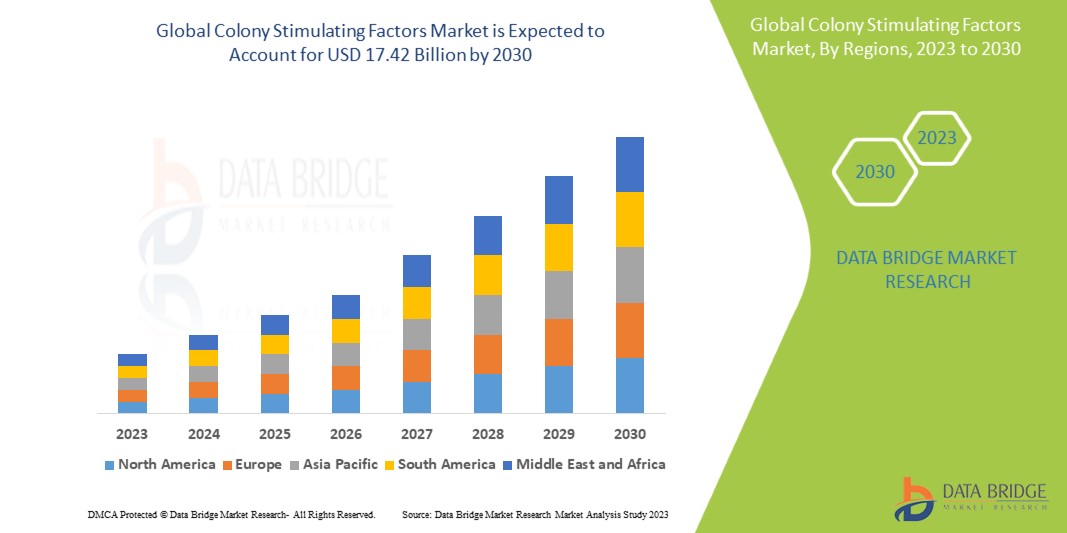Global Colony Stimulating Factors Market – Industry Trends and Forecast to 2029
Global Colony Stimulating Factors Market, By Type (Macrophage–Colony-Stimulating Factor (M-CSF), Multiple-Colony-Stimulating Factor, or Interleukin 3 (IL-3), Granulocyte-Macrophage–Colony-Stimulating Factor (GM-CSF), Granulocyte–Colony-Stimulating Factor (G-CSF)), Drug (Pegfilgrastim, Tbo-filgrastim, Sargramostim, Filgrastim), Application (Aplastic Anemia, Bone Marrow Transplantation, Neutropenia, Neutropenia Associated with Chemotherapy, Neutropenia Associated with Radiation, Peripheral Progenitor Cell Transplantation), Dosage (Tablets, Capsule, Injection, Others), Route of Administration (Intravenous, Subcutaneous, Oral, Others), End-Users (Hospitals, Specialty Clinics, Homecare, Others), Distribution Channel (Hospital Pharmacy, Retail Pharmacy, Online Pharmacy, Others) – Industry Trends and Forecast to 2029
Market Analysis and Size
Colony stimulating factors (CSFs) are hormone-like proteins that promote the creation of immune cells that fight infections. CSFs are produced by a variety of cells in our bodies and can travel throughout the body, binding to cells with specialized CSF receptors. CSFs are used as drugs to promote the formation of white blood cells because they can stimulate the synthesis of immune cells. For those whose immune systems have been decimated by chemotherapy or certain immunodeficiency illnesses, this could be a life-saving treatment. CSFs are also significant drugs utilized in the transplantation of blood stem cells.
Data Bridge Market Research analyses that the colony stimulating factors market was valued at USD 6.98 billion in 2021 and is expected to reach USD 15.74 billion by 2029, registering a CAGR of 10.7% during the forecast period of 2022 to 2029. In addition to the market insights such as market value, growth rate, market segments, geographical coverage, market players, and market scenario, the market report curated by the Data Bridge Market Research team also includes in-depth expert analysis, patient epidemiology, pipeline analysis, pricing analysis, and regulatory framework.
Get More Reports :


Comments
Post a Comment